Management Structure
Management Structure of SI ESHE
Management Structure
National Scientific Infrastructure ENERGY STORAGE AND HYDROGEN ENERGETICS General Assembly (NSI-ESHER) is comprised of several partner institutions - independent legal entities with distributed activities by geographical location. Significant financial resources are spent to develop and modernize the extant management structure, its design and ability to govern, to build and maintain novel and unconventional equipment, to establish a unitary communication and information system, to develop joint educational programs.
The management structure at NSI-ESHER was established in conjunction with the above philosophy. The principle aim is to successfully coordinate the day to day activities in accordance with the established work program, helping to build the material base and unitary science policies, short term and long term strategy, updating the business plan following the synchronization of all programs. The governance structure and coordination has been approved in view of the current partnership agreement in accordance with the following structure:
Authorities:
- General Assembly (GA)
- Executive Board (EB)
Subsidiary body for coordination and implementation part of the EB:
- Board of directors (BD)
Advisory body of NSI-ESHER:
- Advisory board (AB)

General Assembly
The General Assembly (GA) is the supreme body that manages and coordinates the activities at NSI-ESHER. These include the members of the Executive Board (EB), the members of the Board of Directors (BD) and the heads of the partner organizations or their representatives. A partner organization representative can also be a member of the GA by law.
The GA has the following functions:
- Prepares the long-term development strategy at NSI-ESHER;
- Discusses the science investigation, research development and applied research activities at NSI-ESHER;
- Adopts the principle policies and programs for the activities at NSI-ESHER, incl. strategic, operational, marketing documents, etc., as well as their update;
- Carries out risk analysis as regards the implementation of the envisaged activities and tasks and adopts strategies to prevent from all risks;
- Accepts and extricates project partners based on motivated proposals of the EB;
- Approves the annual technical and financial reports of NSI-ESHER.
Decisions are made by consensus. A clear vote with a simple majority of those present is required. Meetings of the General Assembly are convened at least 2 times annually and are chaired by the President of the Executive Board.
Executive Board
The Executive Board is responsible for the strategic and operational management of NSI ESHER. The Executive Board ensures coordination between partners, plans and controls activities, and liaises with infrastructure users.
The Executive Board is led by a Chairman (Project Coordinator), who works with three deputy chairmans responsible for the following main areas:
- Technical Management: Responsible for upgrading existing infrastructure, technical design, and the construction and management of new laboratories and facilities.
- Administrative Management: Coordinates activities such as organizing procurement and other administrative processes that require the involvement of senior scientific staff.
- Web Platform Management: Responsible for the timely updating of the NSI ESHER website, including:
- publishing information on upgraded scientific infrastructure;
- presentation of ongoing, completed, and newly launched projects within NSI ESHER;
- coverage of recent scientific publications and participation in conferences and other scientific forums.
- information on upcoming and ongoing events organized within the infrastructure.
The Executive Board includes heads of the three infrastructure modules, as well as those responsible for knowledge transfer and science policy. This allows the board to manage all key activities in an integrated manner.
The Executive Board has the following functions:
- Ensures and coordinates the establishment and operation of the NSI ESHER.
- Provides and coordinates communication between partners, between partners and users of the infrastructure, and between the infrastructure and other organizations.
- Maintains an active and optimal composition of the board of directors.
- Monitors compliance with intellectual property rules.
- Ensures transparent financial management.
- Coordinate knowledge management activities.
- Ensures continuous quality and timeline control for external users.
- Prepares an annual public report on activity implementation.
- Ensures operational communication by:
- Defining implementation milestones and operational tasks.
- Preparing internal rules for specific project activities.
- Monitoring the implementation of the work program based on implementation milestones and operational tasks.
Board of Directors
The Board of Directors is an operational and flexible executive structure that supports the work of the Executive Board. The Board of Directors has a core and rotating membership, with members leading specific tasks within the infrastructure.
The core staff includes the heads of the three modules and the structural units attached to them. Since the module managers are also executive board members, there is a high degree of communication and coordination between the management and operational structures. The rotating membership includes heads of temporary tasks of limited duration. Once a task is completed, participation in the Board of Directors ends, allowing for the structure's high flexibility and adaptability. The Executive Board makes decisions regarding the composition of the Board of Directors.
The Board of Directors shall include the following:
- The heads of the integrated laboratories and the heads of the ten partner laboratories that constitute Module 1.
- The Module 2 Leader
Advisory Board
The Advisory Board plays an important role in defining the long-term scientific, innovative and business strategy of NSI - ESHER. The Advisory Board consists of external experts (foreign and Bulgarian scientists and businessmen), representatives of research institutes and companies with whom NSI - ESHER has joint project activity or other forms of cooperation and / or interests. The policy of NSI – ESHER is aimed at ensuring the presence of leading European research organizations and companies as well as of Bulgarian companies and institutions, thus enhancing the scientific infrastructure as a national, recognizable and functioning center of expertise.
Advisory Board membres
Foreign members
1. Olaf Jedicke, Institute for Nuclear and Energy Technologies, Germany
2. Salvatore Freni, CNR-ITAE, Italy
3. Andreas Friedrich, DLR, Германия.
4. Plamen Atanassov, University of California, Irvine, USA
Bulgarian members
5. Konstantin Nenov, Solarpro Holding AD
6. Rumen Radev, Holding Zagora
7. Peter Georgiev, Samel 90 AD
Prof. Venko Beshkov
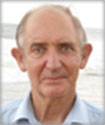 Prof. Venko Beschkov has got his PhD in 1978 and his DSc degree in 1996 in the Bulgarian Academy of Sciences. His present interests are chemical and biochemical processes for environment protection and for utilization of renewable energy sources. He participates in 34 scientific projects, supported by different sources, as well as in 19 applied projects. He has published over 200 scientific papers, 2 monographs and 6 chapters in encyclopedia and selected issues. Over 1400 citations of his papers have been noted. He has been Head of the Institute of Chemical Engineering at the Bulgarian Academy of Sciences for 21 years (1993/2014) and deputy-minister of environment (1991/92).
Prof. Venko Beschkov has got his PhD in 1978 and his DSc degree in 1996 in the Bulgarian Academy of Sciences. His present interests are chemical and biochemical processes for environment protection and for utilization of renewable energy sources. He participates in 34 scientific projects, supported by different sources, as well as in 19 applied projects. He has published over 200 scientific papers, 2 monographs and 6 chapters in encyclopedia and selected issues. Over 1400 citations of his papers have been noted. He has been Head of the Institute of Chemical Engineering at the Bulgarian Academy of Sciences for 21 years (1993/2014) and deputy-minister of environment (1991/92).
Prof. Tamara Petkova, Ph.D.
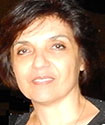 Тamara Petkova received her doctorate in physical ochemistry at the Central Laboratory of Optical Recording and Processing of Information of the Bulgarian Academy of Sciences. She became a research associate at the Institute of Electrochemistry and Energy Systems at the Bulgarian Academy of Sciences in 1994. After post-doctoral scholarship at the University of Patras, Greece, in the field of solid state physics, she returned to IEEC and is currently the Head of the Solid Electrolytes Department. Her research interests include the study of amorphous and crystalline materials for use in energy storage systems.
Тamara Petkova received her doctorate in physical ochemistry at the Central Laboratory of Optical Recording and Processing of Information of the Bulgarian Academy of Sciences. She became a research associate at the Institute of Electrochemistry and Energy Systems at the Bulgarian Academy of Sciences in 1994. After post-doctoral scholarship at the University of Patras, Greece, in the field of solid state physics, she returned to IEEC and is currently the Head of the Solid Electrolytes Department. Her research interests include the study of amorphous and crystalline materials for use in energy storage systems.
Prof. Antonia Stoianova, Ph.D.
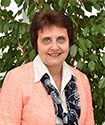
Antonia Stoyanova is currently working as a Professor at the Institute of Electrochemistry and Energy Systems, Bulgarian Academy of Sciences, Sofia, Bulgaria and from 2014 she heads a department “Nanoscale Materials” at the same institute. She received her Ph.D. in the Department of Physical Chemistry, University of Chemical Technology and Metallurgy, Sofia, 1994. She has specialized at the University of Bonn in Germany and the University of Hull, UK. Her current research is focused in field of electrochemical power sources: supercapacitors, alkaline batteries, PEM Hydrogen Energy Conversion. She also has experience in the field of electrocatalysis and electrochemical materials science, quantum-chemical calculations, corrosion inhibitors.
He is a member of the Academic Council of the Bulgarian Academy of Sciences, the National Center for Nanotechnology at the Bulgarian Academy of Sciences, the International Electrochemical Society and the Bulgarian Electrochemical Society.
Prof. Radostina Stoianova
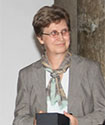 Radostina Stoyanova is a Professor on Solid State Chemistry at the Institute of General and Inorganic Chemistry to the Bulgarian Academy of Sciences. She is a head of the department on Intermetallic and Intercalation Materials. Her expertise concerns intercalation chemistry with a focus on lithium/sodium transition metal oxides, sulfates and phosphates having reversible Li+ and Na+ intercalation properties and electron paramagnetic resonance spectroscopy as a tool to assess their local structure during ion intercalation. Starting from 1993, these studies are carrying out in a close collaboration with research groups from Universidad de Córdoba (Spain), ICMCB-Bordeaux (France), LNCMI-Grenoble (France) and Universität Bayreuth (Germany).
Radostina Stoyanova is a Professor on Solid State Chemistry at the Institute of General and Inorganic Chemistry to the Bulgarian Academy of Sciences. She is a head of the department on Intermetallic and Intercalation Materials. Her expertise concerns intercalation chemistry with a focus on lithium/sodium transition metal oxides, sulfates and phosphates having reversible Li+ and Na+ intercalation properties and electron paramagnetic resonance spectroscopy as a tool to assess their local structure during ion intercalation. Starting from 1993, these studies are carrying out in a close collaboration with research groups from Universidad de Córdoba (Spain), ICMCB-Bordeaux (France), LNCMI-Grenoble (France) and Universität Bayreuth (Germany).
Winner of the prestigious award Pythagoras for an acknowledged scientist in the field of natural and engineering sciences for 2018. Member in Royal Society of Chemistry (фром 2015), International Electrochemical Society (from 2010) and Bulgarian Catysis Club and others.
Assoc. Prof. Gergana Raikova, Ph.D.
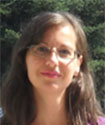 Gergana Raikova is Associated Professor in Electrochemistry since 2014 at IEES-BAS. She authored more than 50 publications and presented a large number of conference papers. Her activities are focused on Electrochemical Impedance Spectroscopy applications for Solid Oxide Fuel Cells studies. She participates actively in the above mentioned institutional and European projects. She has an international experience obtained through a number of ERASMUS mobility grants; participation EU projects workshops, bilateral collaboration. She is a member of the International Society of Electrochemistry (ISE).
Gergana Raikova is Associated Professor in Electrochemistry since 2014 at IEES-BAS. She authored more than 50 publications and presented a large number of conference papers. Her activities are focused on Electrochemical Impedance Spectroscopy applications for Solid Oxide Fuel Cells studies. She participates actively in the above mentioned institutional and European projects. She has an international experience obtained through a number of ERASMUS mobility grants; participation EU projects workshops, bilateral collaboration. She is a member of the International Society of Electrochemistry (ISE).
Martin S. Bojinov, Prof. PhD, DSc (Chem.)
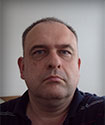 Master of Science in Electrochemical Engineering and Corrosion Protection, 1988, University of Chemical Technology and Metallurgy, Sofia, Bulgaria. PhD in Electrochemistry, 1994, DSc in Physical Chemistry, 2006. Active Member of the Electrochemical Society, Inc. (since 2002) and the International Society of Electrochemistry (since 2004). Senior researcher at the Institute of Electrochemistry and Energy Systems (1997-1999) and VTT Technical Research Center of Finland (2000-2004). Currently Professor of Physical Chemistry and Director of the Hydrogen Technology Center, University of Chemical Technology and Metallurgy, Sofia, Bulgaria, and Research Director, Hydrogen Energy Technologies Division, BG H2 Society. More than 30 years of experience in experimental characterization and modeling of corrosion and anodic oxidation of metals and alloys in various environments, nanotechnologies and nanomaterials for energy systems, including electrolysis and photo-electrolysis, and development of experimental and modeling techniques in electrochemistry and corrosion. More than 250 scientific publications and presentations at international conferences, more than 2700 citations in official literature sources, h-factor 28.
Master of Science in Electrochemical Engineering and Corrosion Protection, 1988, University of Chemical Technology and Metallurgy, Sofia, Bulgaria. PhD in Electrochemistry, 1994, DSc in Physical Chemistry, 2006. Active Member of the Electrochemical Society, Inc. (since 2002) and the International Society of Electrochemistry (since 2004). Senior researcher at the Institute of Electrochemistry and Energy Systems (1997-1999) and VTT Technical Research Center of Finland (2000-2004). Currently Professor of Physical Chemistry and Director of the Hydrogen Technology Center, University of Chemical Technology and Metallurgy, Sofia, Bulgaria, and Research Director, Hydrogen Energy Technologies Division, BG H2 Society. More than 30 years of experience in experimental characterization and modeling of corrosion and anodic oxidation of metals and alloys in various environments, nanotechnologies and nanomaterials for energy systems, including electrolysis and photo-electrolysis, and development of experimental and modeling techniques in electrochemistry and corrosion. More than 250 scientific publications and presentations at international conferences, more than 2700 citations in official literature sources, h-factor 28.
Professor Branimir Banov
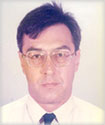 Professor Branimir Banov works at the Institute of Electrochemistry and Energy Systems - IEES of Bulgarian Academy of Sciences - BAS. During the years take part as leader of team successfully developing two lithium electrochemical systems in Bulgaria – lithium sulfur dioxide and lithium manganese dioxide. He was been engaged in many industrial projects starting small-scale production of lithium batteries in Bulgaria at 1985. Specialist on manganese dioxides successfully develops semi industrial process of high capacity lithium manganese dioxide spinel production (reversible capacity 135 mAh g-1) for secondary lithium ion batteries. Many papers with famous coauthors as Masaky Yoshio, Jun-Ichi Yamaki, Akia Kozawa, Christian Julien, Karim Zahib, Martin Winter and others.
Professor Branimir Banov works at the Institute of Electrochemistry and Energy Systems - IEES of Bulgarian Academy of Sciences - BAS. During the years take part as leader of team successfully developing two lithium electrochemical systems in Bulgaria – lithium sulfur dioxide and lithium manganese dioxide. He was been engaged in many industrial projects starting small-scale production of lithium batteries in Bulgaria at 1985. Specialist on manganese dioxides successfully develops semi industrial process of high capacity lithium manganese dioxide spinel production (reversible capacity 135 mAh g-1) for secondary lithium ion batteries. Many papers with famous coauthors as Masaky Yoshio, Jun-Ichi Yamaki, Akia Kozawa, Christian Julien, Karim Zahib, Martin Winter and others.
Profesor Mario Mitov
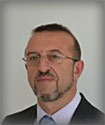 Mario Mitov graduated as a chemical engineer in “Electrochemical productions and power sources” at the University of Chemical Engineering and Metallurgy, Sofia, Bulgaria, in 1985. He began his professional carrier in the Department of Chemistry at South-West University, Blagoevgrad, Bulgaria in 1987., Prof. Mitov delivers lectures on General and Inorganic Chemistry, Physicochemistry and Electrochemistry. His research interests are focused on characterization of nanomaterials as potential electrodes for rechargeable batteries and fuel cells and investigation of bioelectrochemical systems such as Microbial Fuel Cells, Microbial Electrolysis Cells and Direct Photosyntesizing Plant Fuel Cells.
Mario Mitov graduated as a chemical engineer in “Electrochemical productions and power sources” at the University of Chemical Engineering and Metallurgy, Sofia, Bulgaria, in 1985. He began his professional carrier in the Department of Chemistry at South-West University, Blagoevgrad, Bulgaria in 1987., Prof. Mitov delivers lectures on General and Inorganic Chemistry, Physicochemistry and Electrochemistry. His research interests are focused on characterization of nanomaterials as potential electrodes for rechargeable batteries and fuel cells and investigation of bioelectrochemical systems such as Microbial Fuel Cells, Microbial Electrolysis Cells and Direct Photosyntesizing Plant Fuel Cells.
Message
Confirmation
Confirm the operation!
 en
en Български
Български